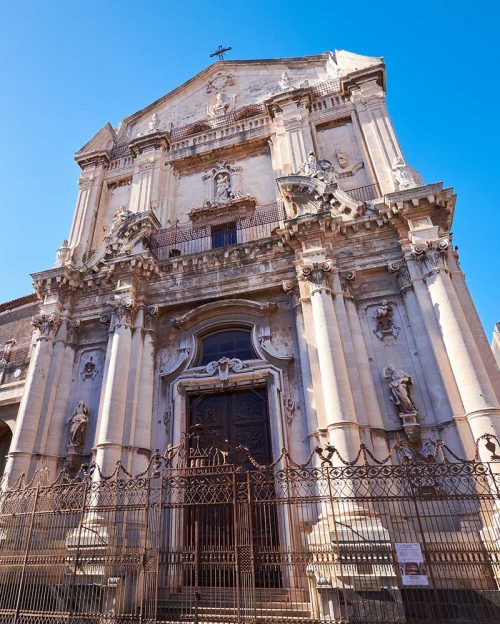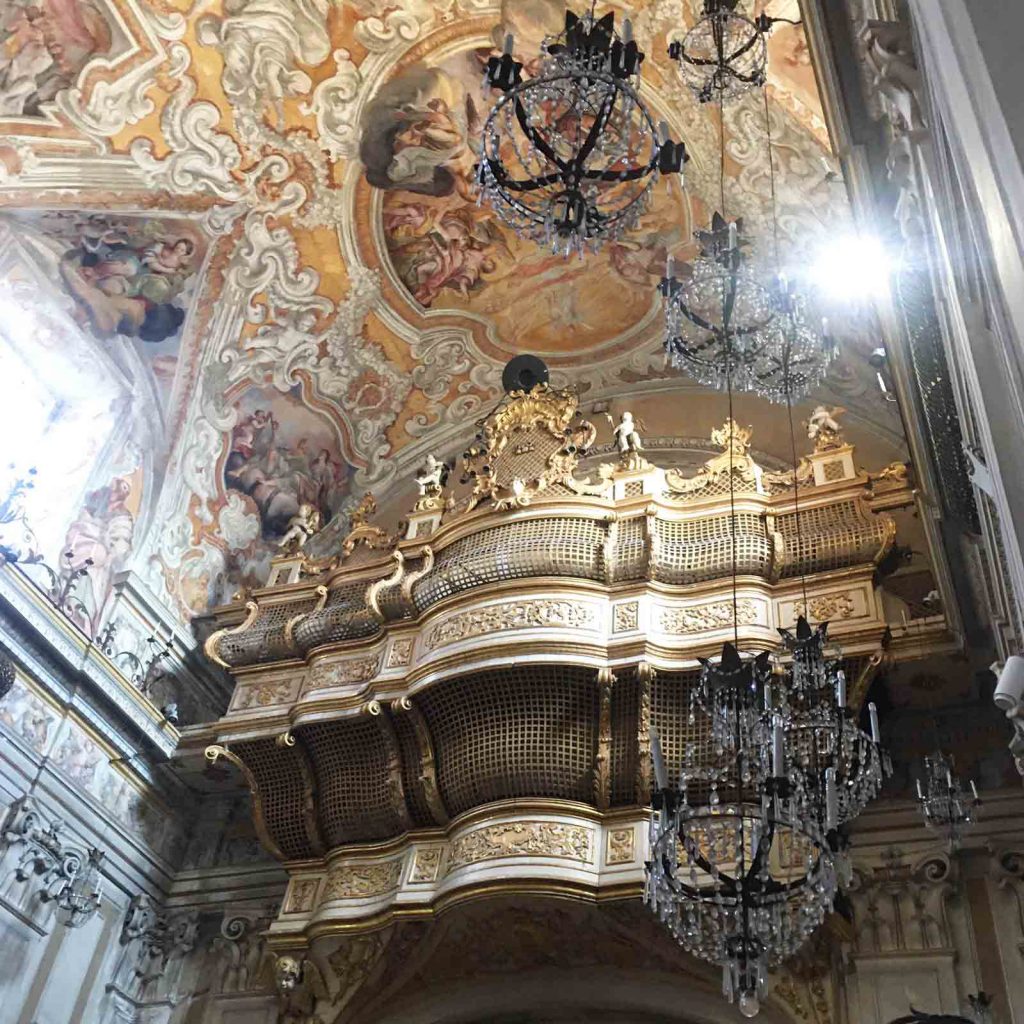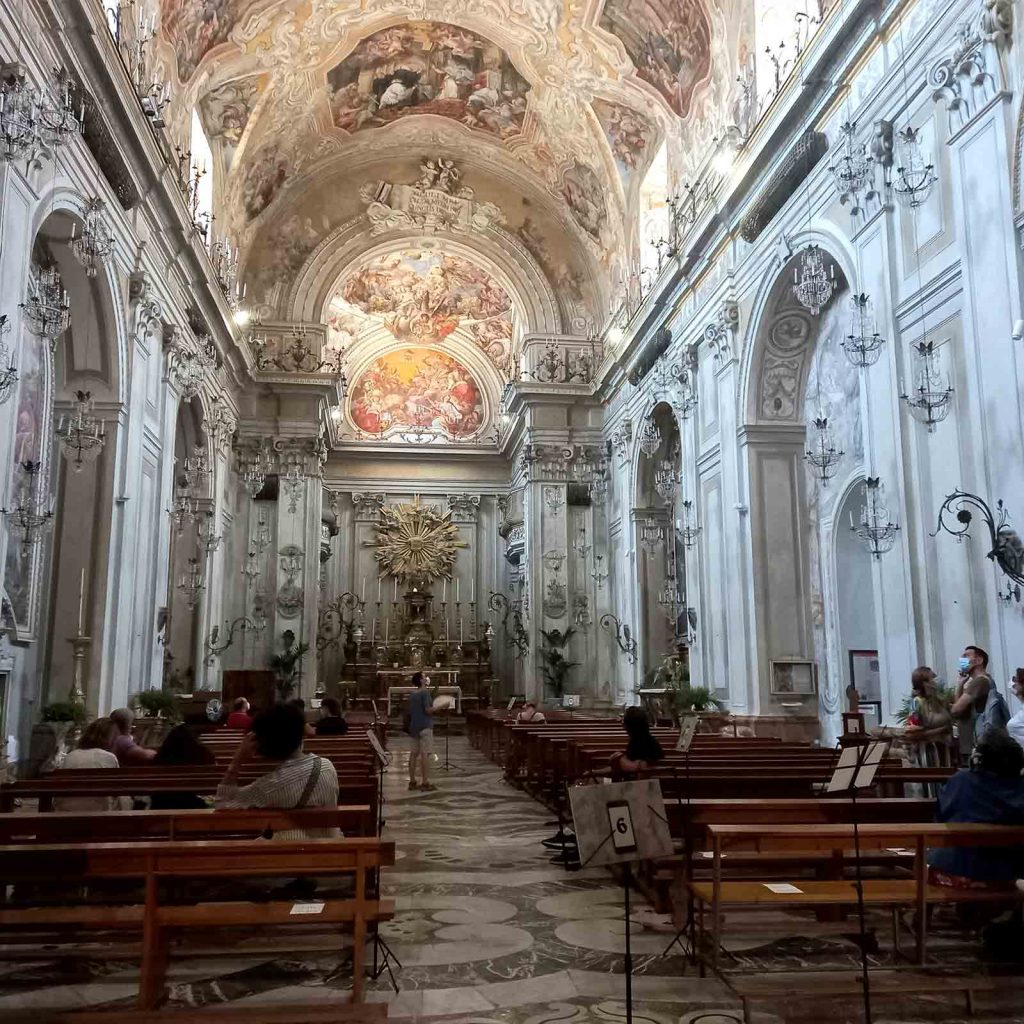
The Story
Monastery of
Saint Benedict's
The monastery of St Benedict was first built in 1334, in an area of Catania close to the Greek Theater and the Odeon, but due to the unhealthiness of the area, it was rebuilt a few years later, in 1355, further down, where it stands today. According to some sources, the new building was erected on the site of the ruins of the church of St Stephen the Martyr, built in 679 AD at the behest of the Byzantine bishop Arcadius.
Little remains of the medieval monastery today, destroyed by an earthquake in 1693 that devastated the entire Val di Noto. Rebuilt in the Baroque style during the 18th century, the monastery now comprises most of the block defined by Via Crociferi, Via Teatro Greco, Piazza Asmundo, Via San Benedetto and Via San Francesco d’Assisi.
Baroque reconstruction
Its expansion is closely linked to the reconstruction of the 18th century
Christian
spirituality and devotion
Its expansion is closely linked to the Baroque reconstruction of the 18th century: in fact, the Benedictine arch was built in 1704, joining the large and small abbeys of the monastery. The façade of the latter is the work of architect Gian Battista Vaccarini, one of the major architects of Catania’s Baroque revival.
Still today, the monastery of St Benedict of the Perpetual Adoration of the Blessed Sacrament is a point of reference for Christian spirituality and devotion, the seat of a cloistered female monastic community, whose special feature is the perpetual adoration of the Blessed Sacrament.


